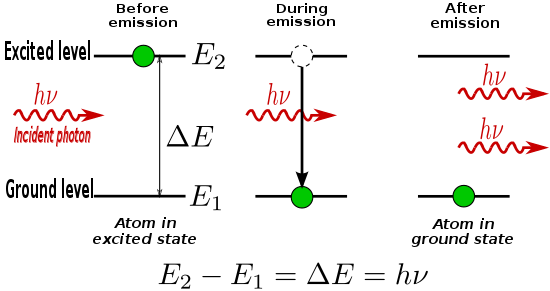LASER is an acronym for Light Amplification by Stimulated Emission of Radiation.
Laser is a technology of paramount importance to the prosperity of mankind. As verbose as the previous sentence sounds, it is indeed the best way to rank the significance of the technology. Lasers are used in varying fields, ranging from laser hair removal and laser surgery to instrument calibration.
As such, I believe that all of us should know the basic principles of laser production. Under any circumstances should you find yourself requiring a laser hair removal expert, you can rest at peace with the principles of laser production firmly in mind. It's not much, but it could prove to be a hell of an icebreaker with that pretty surgeon that you had your eyes on.
Without further ado:
 |
| Picture Unrelated |
The principles of laser production are:
-Stimulated Emission
-Metastable State
-Population Inversion
-Light Amplification
Stimulated emission is the emission of a photon from an excited atom by another photon of the exact same frequency. Both of the photons are coherent.
 |
| image from wikipedia.org |
Light amplification is the process in which one photon stimulates the emission of another proton of the same frequency. The two photons then stimulate the emission of two other photons.
Think: 'Chain Reaction + Stimulated Emission'.
The chain reaction results in a burst of photons, all in phase, monochromatic(same frequency), and highly coherent. Constructive superposition of said waves produce a beam of high intensity.
And that, is the basic idea of laser. More to come in a future post, wouldn't want to overload you with too much information.
EDIT: This post is apparently very popular in the general location of NYC, famous for cheap laser hair removal. NYC will then have gained a little knowledge of lasers. I flatter myself.


wow you got a really amazing blog ! and this post is really interesting, followed !=)
ReplyDeleteWow man... this is entertaining and informative!
ReplyDeleteThe part about surgeons - that's right, being in med school I had to spend quite some time learning about lasers and their uses. The great part is, this beam is really precise and in some cases you may even adjust the power of the laser. There are different colours of lasers, it all depends on the internal construction, used power and purpose. The mostly used in medicine are the green ones (as far as I remember). Fun fact and also a way to prove Moon Landing wasn't a hoax: astronauts left a mirror on the surface of the Moon, thus anyone with a laser strong enough may target it and then - basing on the beams travelling time forth and back - may calculate the actual distance between the Moon and Earth. Pretty cool, eh?
ReplyDeleteNice post man!
ReplyDeleteIve always been into lasers. There is some real potential here.
ReplyDeleteI'm fascinated by these types of articles. Science and technology have come so far in the past 20 years. I'm REALLY curious what will be going on when my kids are my age.
ReplyDeleteGlad i stumbled upon this article surfing at work today.